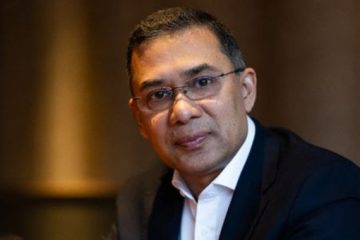Experts see absence of crash barriers, raised walkways on Salehpur bridge as reasons for Sunday’s bus plunge
 Absence of crash barriers on the approach to Salehpur bridge in Amin Bazar caused Sunday’s bus plunge in the Turag river, killing at least 13 people.
Absence of crash barriers on the approach to Salehpur bridge in Amin Bazar caused Sunday’s bus plunge in the Turag river, killing at least 13 people.
The same engineering flaw of the bridge was responsible for another serious bus accident five years back, which too left 13 people dead.
Experts of Accident Research Institute (ARI) of Bangladesh University of Engineering and Technology have come to this conclusion after inspecting the scene of the latest accident.
ARI chief Prof Shamsul Hoque said, “When we visited the place after the accident five years ago, we saw no crash barriers. And we found no crash barriers again after Sunday’s accident.”
The design and safety wing of the Roads and Highways Department, which is responsible for finding and repairing defects on roads and bridges, did nothing to prevent repeat of the accident.
Prof Hoque said the bridge is around 35 feet high from the ground, yet its approach and exit have no crash barriers, which prevent vehicles from leaving the roadway and thus improve road safety.
Like crash barriers, he added, another essential part of a safe bridge is raised walkways on either side of the approach road, which act as non-mounted crash barriers.
Salehpur bridge has no such walkways either.
Hoque said during Sunday’s accident the bus fell into the river from the approach to the bridge. If there had been crash barriers and raised walkways, the bus would have hit them first and veered back onto the road.
The ARI team also suspects that the bus might have been on the wrong side trying to overtake another vehicle.
Earlier, some reports stated that the bus plunged off the road after its left front tyre burst. But the ARI experts found the wheel intact.
Speaking in return for anonymity, an RHD official said though the safety wing was formed 10 years ago, it has been working to detect faulty highways and bridges for only a year.
Paribesh Bachao Andolan, an environmentalist group, says over 100 people were killed and 300 injured in some 50 road accidents on and near Salehpur bridge in last two decades. It has tallied the numbers from newspaper reports, said Atik Morshed, programme officer of the organisation.
The ARI chief told The Daily Star that many lives could have been saved, had the bridge been built flawlessly.
He said the authorities concerned should not have left such a high bridge without adequate safety measures.
Contacted, Mohammad Itrat Hossain Zakaria, chief of the road design and safety wing of RHD, said his officers will see if the bridge has any engineering faults.
He said they have started the process of fault detection after he took over around a year ago. However, they will have to depend on ARI findings as long as their own surveys are not complete.




















